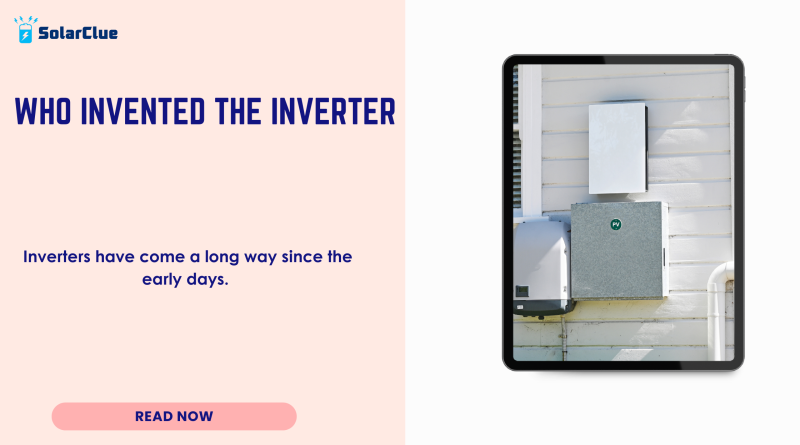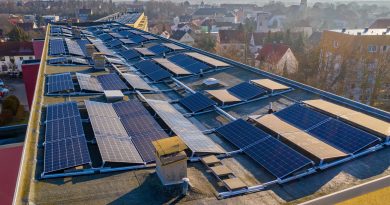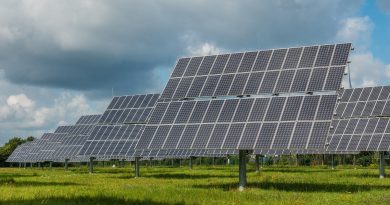Who Invented the Inverter
Have you ever wondered who invented the inverter, that little device that plays a massive role in our modern lives? Whether you’re powering your home during an outage, running your home solar system, or just charging your phone on the go, inverters are everywhere. But where did it all start, and how did this technology come to be such an integral part of our lives? Let’s dive into the history, the inventor behind the concept, and how inverters have evolved over time.
Table of Contents
The Birth of Electrical Power Conversion
To understand the invention of the inverter, we need to start with the concept of electrical power conversion. Electricity, as we know it, comes in two primary forms: direct current (DC) and alternating current (AC). DC is the type of electricity you get from a battery, while AC is the kind you get from your wall outlet. The challenge, historically, was finding a way to convert DC to AC efficiently, which is where inverters come into play.
The Man Behind the Invention: David Prince
David Prince is credited with coining the term “inverter” back in 1925. Although inverters as a concept existed earlier, the naming and specific development can be traced back to Prince’s work. He was not the first to create a device that could convert DC to AC, but his contributions in refining and naming the technology were pivotal. Before Prince’s time, many researchers and engineers experimented with methods to invert DC to AC, a process crucial for the early power grids. The problem was that early methods were bulky, inefficient, and not suitable for widespread use. Prince’s work helped lay the groundwork for more practical and efficient inverters, which would become a cornerstone of modern electrical engineering.
How Inverters Work
So, what exactly does an inverter do? In simple terms, an inverter takes direct current (DC) electricity and converts it into alternating current (AC). This conversion is essential because most household appliances and electronic devices operate on AC power, while many sources of power, like batteries and solar panels, generate DC. The basic process involves using a switch or set of switches to rapidly turn the DC input on and off. This creates a form of AC called “square wave,” which is not the smooth sine wave needed by most electronics. To refine this square wave into a usable sine wave, inverters use filters or more sophisticated switching techniques.
The Evolution of Inverters
Inverters have come a long way since the early days. Initially, inverters were bulky, expensive, and only used in specific industrial applications. However, advancements in technology have dramatically reduced their size and cost, making them accessible for a wide range of uses.
- Early Mechanical Inverters: The first inverters were mechanical devices, often using rotary converters to change DC to AC. These were noisy, inefficient, and prone to wear and tear.
- Solid-State Inverters: With the advent of solid-state electronics in the mid-20th century, inverters became more reliable and efficient. The use of transistors allowed for more compact designs and lower energy losses.
- Modern Inverters: Today’s inverters are highly sophisticated, with the ability to produce pure sine waves that are nearly indistinguishable from the power you get from the grid. They are used in everything from solar power systems to uninterruptible power supplies (UPS) for computers.
The Impact of Inverters on Modern Life
Inverters have had a profound impact on various aspects of modern life. Here’s how:
- Renewable Energy: Without inverters, solar panels and wind turbines wouldn’t be able to supply power to our homes and businesses. Inverters convert the DC power generated by these systems into AC power that can be used by household appliances.
- Emergency Power: Inverters are crucial in backup power systems. During a power outage, an inverter can take power from a battery and convert it into AC to keep your essential devices running.
- Portable Power: Whether you’re camping, traveling, or just need power on the go, inverters in portable power banks convert DC from batteries into AC to charge your devices.
- Electric Vehicles (EVs): Inverters play a key role in electric vehicles by converting the DC from the car’s battery into AC to power the motor.
A Table Overview of Inverter Types
To better understand the evolution and types of inverters, here’s a quick comparison:
| Inverter Type | Era | Technology | Use Case |
|---|---|---|---|
| Mechanical Inverters | Early 20th century | Rotary converters, vibrators | Industrial applications, early power grids |
| Solid-State Inverters | Mid-20th century | Transistors, semiconductor switches | Residential use, renewable energy systems |
| Modern Inverters (Pure Sine Wave) | Late 20th century to Present | Advanced electronics, microprocessors | Home solar systems, EVs, UPS systems |
The Future of Inverters
The future of inverters looks promising as technology continues to advance. We can expect to see even more efficient and compact designs, especially as renewable energy systems become more prevalent. Innovations like smart inverters, which can communicate with the grid and other devices, are already making their way into homes and businesses. These smart inverters not only convert DC to AC but also help manage energy consumption, optimize power flow, and provide real-time data on system performance. This is particularly important in microgrids and smart homes, where energy management is crucial for efficiency and cost savings.
Conclusion
Who would have thought that a simple idea like converting DC to AC could have such a massive impact on our lives? From the early days of mechanical devices to the sophisticated electronics of today, the inverter has truly revolutionized the way we use and manage electricity. So, next time you flip on a light switch or charge your phone, take a moment to appreciate the humble inverter and the brilliant minds like David Prince who made it all possible.
Visit SolarClue® to see the best Solar Inverter. SolarClue® actively sells solar energy products at discounts of up to 50% on its online marketplace.
FAQs
Q1: Why do we need inverters in solar power systems?
A: Solar panels generate DC power, but most household appliances run on AC power. Inverters convert the DC into AC, making the power usable in your home.
Q2: Can an inverter be used without a battery?
A: Yes, inverters can work without a battery in systems like grid-tied solar installations, where they convert solar power directly for use or feed it back into the grid.
Q3: What is the difference between a pure sine wave and a modified sine wave inverter?
A: Pure sine wave inverters produce power that is nearly identical to grid power, making them ideal for sensitive electronics. Modified sine wave inverters are cheaper but may not work well with all devices.
Q4: How long do inverters typically last?
A: The lifespan of an inverter depends on its type and usage but generally ranges from 5 to 15 years.
Q5: Are inverters energy efficient?
A: Modern inverters are quite efficient, with many achieving efficiencies of over 90%, meaning only a small percentage of energy is lost during the conversion process.




